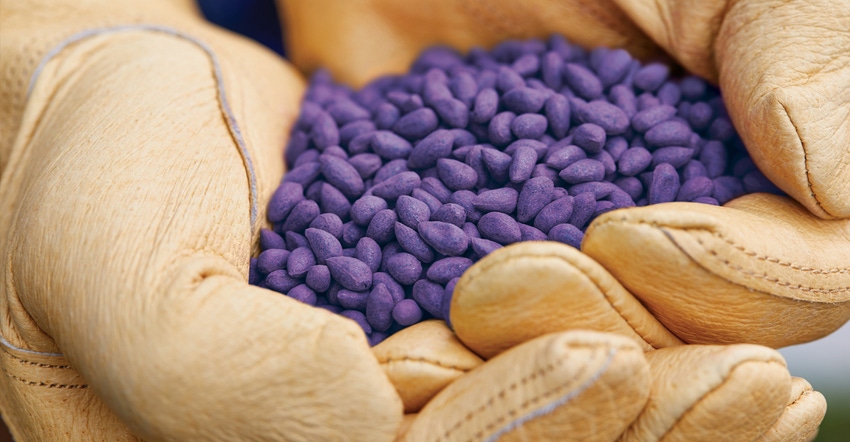
While you're filling planter boxes, dust from seed corn and soybean treatments may be blowing in the wind — into your eyes, nose, maybe mouth and onto your skin. Concern over what EPA calls "fugitive dust" that now contains small active ingredient combinations of herbicides, insecticides, fungicides, growth regulators and more has been documented by numerous research studies for the Pollinator Partnership's Corn Dust Research Consortium, but for pollinators, not humans.
You may be more directly exposed to seed treatment dust than bees are, confirms Greg Roth, Penn State Extension agronomist. "It's one of my worst exposures," he adds.
That may be another reason why Bayer Crop Science, BASF and Syngenta are involved in the consortium and are developing new seed coatings. Talc and graphite are routinely mixed with treated seed to ensure uniform seed drop by planters. But these lubricants don't necessarily reduce fugitive dust, according to the CDRC report.
Abrasion of treated seed coatings bouncing down seed tubes also can result in dust released in air planter systems or subsequent equipment cleaning. Bee mortality increases have been linked to corn planter dust activities in Iowa and Ohio studies involving neonicotinoid residues.
While EPA has no human toxicity data for multiple seed treatments, product labels specify appropriate personal protective equipment based on the active ingredients, points out Michael Pate, Extension safety specialist at Penn State. He cites Syngenta's Clariva Elite Beans label as an example:
The seed treatment includes four insecticides and a nematicide. Thiamethoxam, a neonic product, is noted on the label as being toxic to bees when translocated as dust residues.
Skin and inhalation risks to handlers and applicators are also noted. That's why safety recommendations include long sleeves, shoes and socks, chemical-resistant gloves, and a NIOSH-approved respirator with R or P filter or a powered air purifying respirator.
Gloves should be washed on the outside before removing. Contaminated PPE and clothing should be immediately removed after exposure.
5 preventative methods you can employ
The CDRC recommends these safety practices for farmers:
1. Read and follow label precautions listed on treated seed.
2. Take precautions to reduce dust and drift, especially with respect to wind speed and weather conditions during planting. Reduce dust by using abrasion-reducing synthetic lubricants in pneumatic (air) planters. CDRC research indicates significant dust reductions for synthetic lubricants compared to talc or graphite.
3. Clean and maintain planting equipment regularly and carefully. Keep in mind that dust left in the hopper can still be harmful.
4. When cleaning the equipment, avoid generating dust and contaminating areas with wash water. That dust usually needs to be scrubbed or filtered out of the exhaust and placed below ground or properly disposed.
5. Keep in mind that bee-attractive woody pollen sources (woody shrubs, apples, crab apples, hawthorns, maples and willows) may be vulnerable to exhausted planter dust when corn is being planted within 165 feet.
Remember, what's bad for bees isn't good for you, either.
Seed companies dusting off
Any active ingredient that doesn't remain on the seed may mean a loss in yield potential. That's why Bayer Crop Science, BASF and Syngenta are working to reduce off-target dust and flaking risks.
"A grower has to retain more of the active ingredient on the seed. He has ultimately paid for it," says Justin Clark, BASF technical marketing manager. "We use the [Heuback] dust meter to gauge the quality of coatings BASF generates. Now, with major row crops, we use seed film coatings, which encase active ingredients within a thin film that binds the materials to the seed, improving handling and reducing dust-off for growers."
About the Author(s)
You May Also Like




